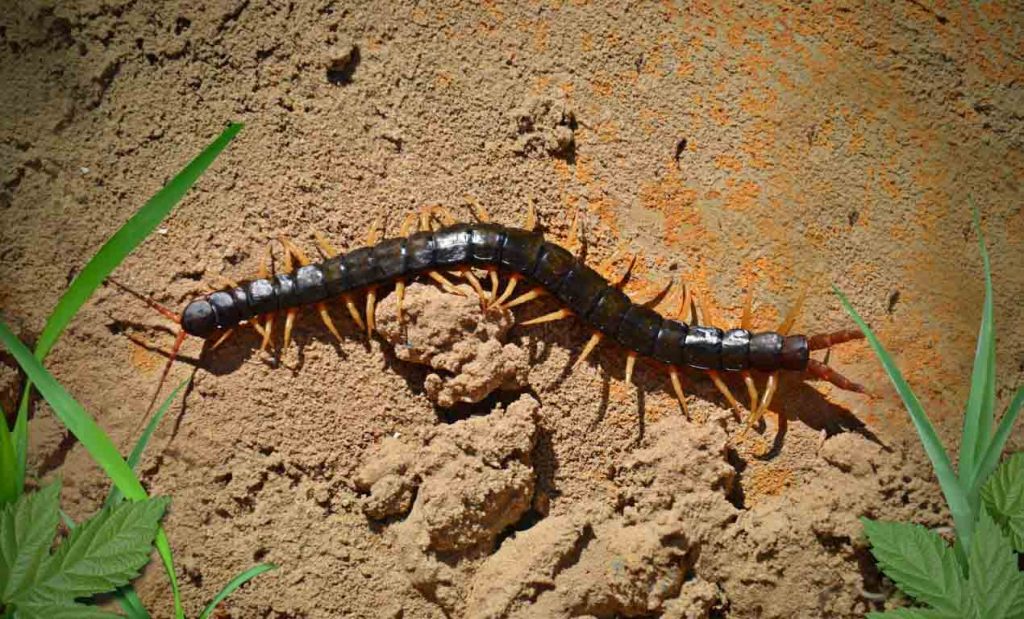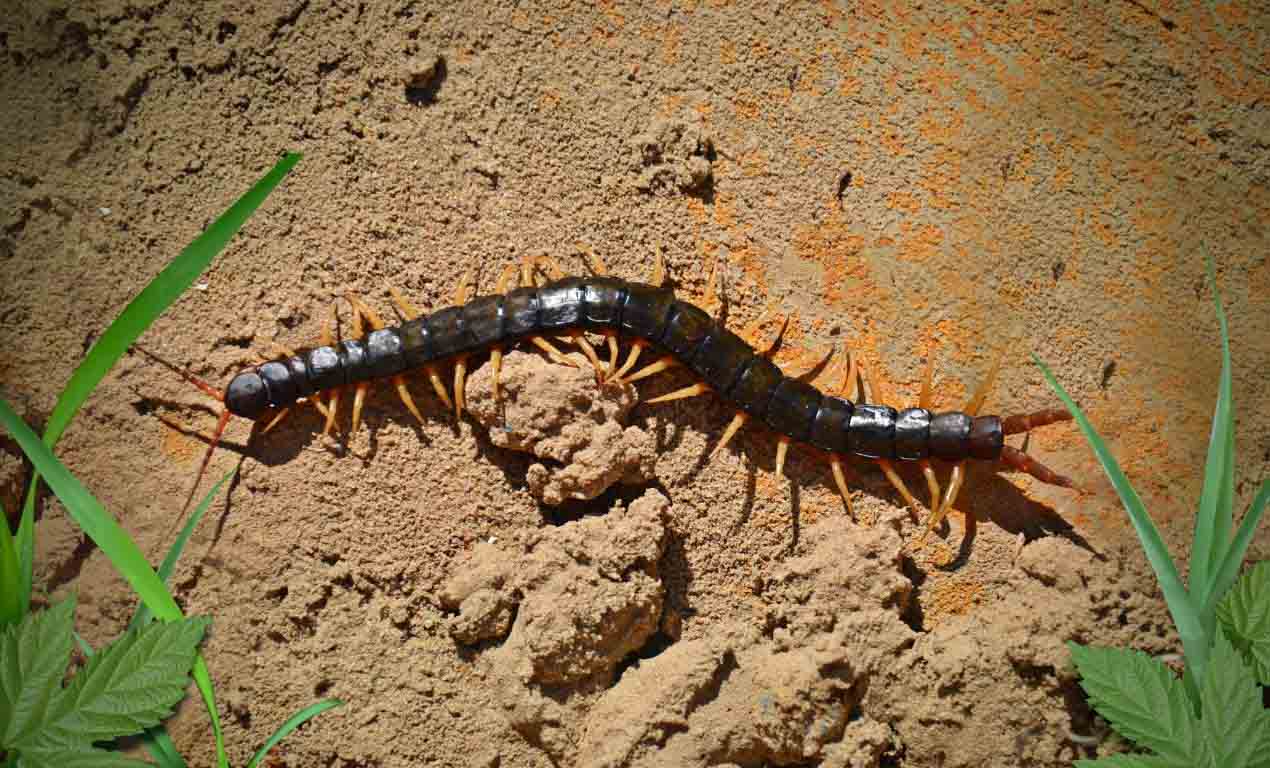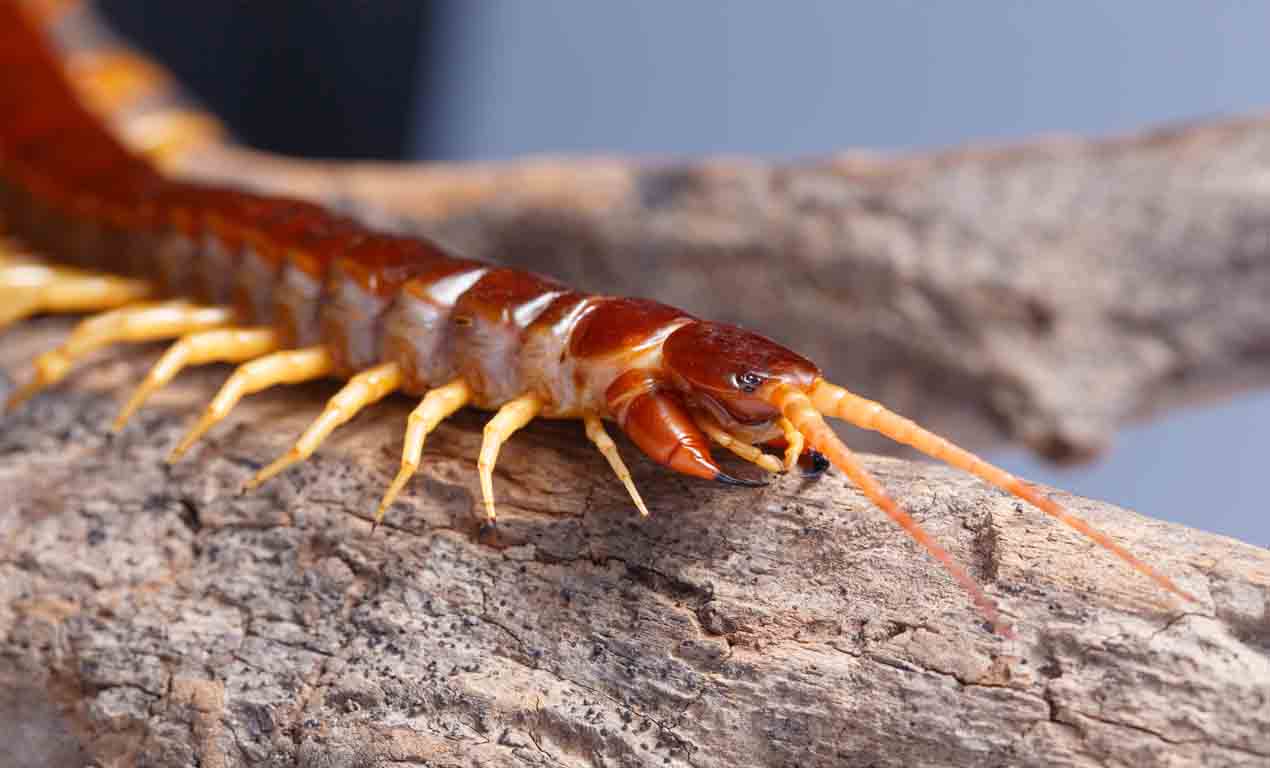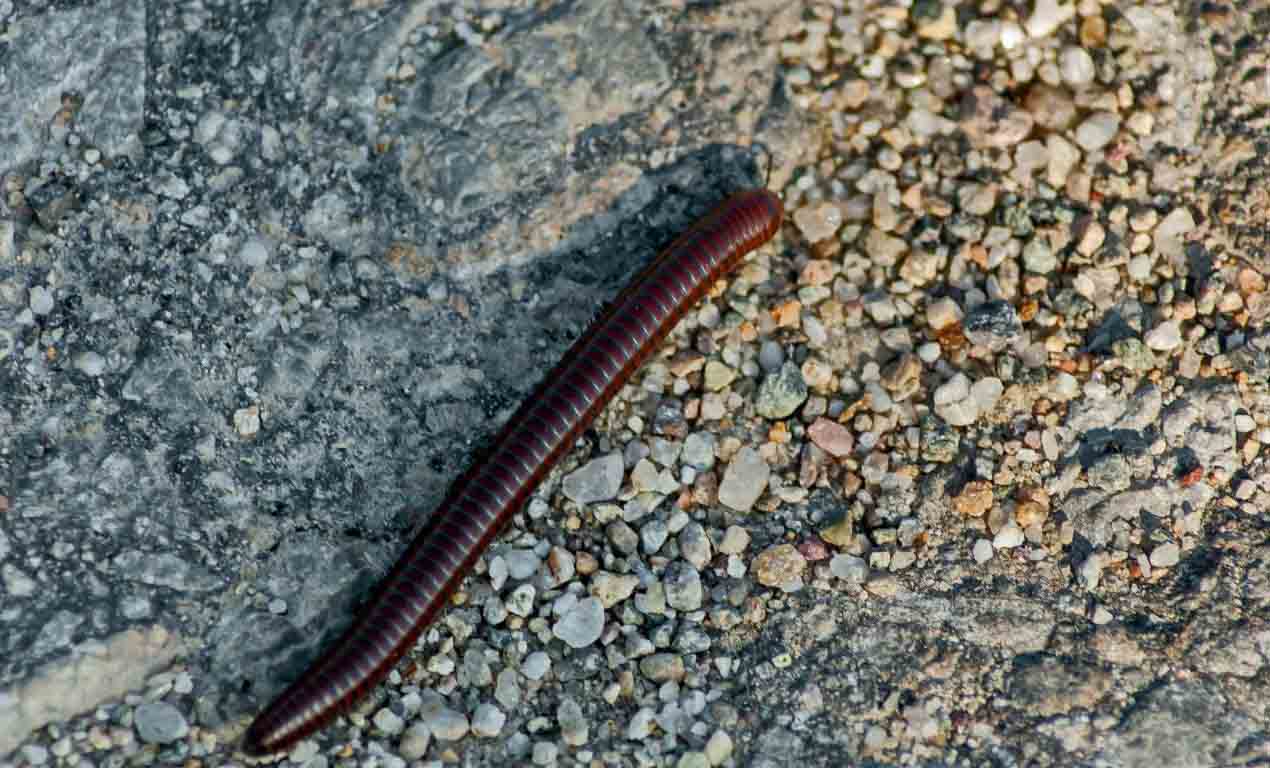
 Often times you’ll see centipedes moving around your garden near your plants and that’s where the question arises. Do centipedes have some kind of relationship with your garden? No matter how hard you try why do they keep coming back? Is this a thing to worry about or something completely natural and good for your plants and garden?
Often times you’ll see centipedes moving around your garden near your plants and that’s where the question arises. Do centipedes have some kind of relationship with your garden? No matter how hard you try why do they keep coming back? Is this a thing to worry about or something completely natural and good for your plants and garden?
So, with that are centipedes good for plants? Except for pseudocentipede or garden centipedes all other centipedes are good for plants. They feed on harmful pests and keeps your plants protected. Since, centipedes are carnivorous they don’t harm plants but garden centipede and pseudocentipede can so, you should be careful if you see them.
Keep reading to know more about them
Little Bit About Centipedes
Centipedes belong to class Chilopoda and are predatory animals. They are not insects. Similar looking animals called the millipede are from class Diplopoda. Both are Arthropods and vary in the following ways:
- Centipedes are carnivores, while millipedes are herbivores
- Centipedes have only one pair of legs for every segment of their body, while the millipede has two pairs of legs with each of their body segments.
- Centipedes can have many colors and antenna in front. Millipedes are dark in color.
Following are some common types of centipedes that frequent your plants and trees:
- The garden centipede or Symphylans or pseudocentipede
- The bark centipede or Scolopocryptops sexspinosus
- The stone centipede or Lithobious forficatus
- The snake centipede or Geophilus vittatus
- The soil centipede or Geophilomorpha
The Garden Centipede
These Symphylans resemble the centipede and are soil-dwelling arthropods. They can burrow down to around 50cm below the soil surface. They are non-venomous and feed on plant matters – roots, root-hairs, and seeds. Adults have twelve pairs of legs, and there are around 200 species found worldwide. Click here to check our recommended centipede control products.
Brief Description
They are generally soft, small, and has no color pigment. They have no eyes, and their body gets made of head and trunk. Their head has a segmented antenna, which can sense vibration. Their mouth-parts have three parts.
Their trunk is made up of 15-24 segments. Every segment bears a pair of legs, except for the last few. They are swift runners and live under the decaying matter, wood, inside the soil, and under gravels and stones.
They reproduce similar to centipedes, and the adult’s life-span is about four years. They molt throughout their life. Due to their feeding habit, they are classified more like a millipede than a carnivorous centipede!
The Bark Centipede
 These are actual centipede and are carnivores. They are agile, are nocturnal and forage around and on trees for their prey.
These are actual centipede and are carnivores. They are agile, are nocturnal and forage around and on trees for their prey.
Brief Description
They are reddish-brown with yellow legs. They have a long flattened body, which helps them to squeeze thro’ narrow gaps. They have one leg pair per body segment. They use their forcipules to inject venom to incapacitate their prey, before using their mouth-parts to feed on them.
They do not attack humans, and if threatened, they may sting and inject their poison in self-defense. The venom is similar to a bee sting, and swelling will disappear in a couple of days.
The Stone Centipede
They are also known as a brown centipede or common centipede. They look tough, segmented, and reddish-brown colored. They have fifteen pairs of legs and grows up to 2inches in length. They have poor vision but depends upon its sensitive antenna to pick up its prey. They have stout and short legs and antenna.
They get found in moist mulch, under rocks, below logs, and leaves. They prey on spiders, insects, small birds, and larvae.
The Snake Centipede
They are long and are yellow or orange. They usually burrow deep inside the soil and live there in a dark, moist environment. Also found around tree stumps and bark. They feed on small soil-dwelling invertebrates.
The Soil Centipede
These centipedes are reddish-brown to white. They have slender, flattened bodies. They have between 26 to 192 pairs of legs, depending upon the species. All centipedes have an odd number of pairs of legs. The soil centipedes cannot see, and their antennas do all the sensing. Their length ranges from one to eight inches.
Soil centipedes get found inside the soil, just like earthworms. They get found under rocks and trees in the garden, farms, and wasteland. They are predators. They feed on all types of insect larva and earthworms.
They consume large quantities of soil-dwelling larvae. Their tunneling aerates the soil, carrying water, nutrient, and air to the root of plants. Click here to find more about our recommended centipede control products.
Millipedes
 Millipedes generally feed on the decaying and organic matter found in your garden. In the absence of this food, they may turn to stems, roots, and seeds. If the millipedes are in control, they are useful by keeping your garden and plants healthy and well. Once they grow disproportionately, they start destroying your greens.
Millipedes generally feed on the decaying and organic matter found in your garden. In the absence of this food, they may turn to stems, roots, and seeds. If the millipedes are in control, they are useful by keeping your garden and plants healthy and well. Once they grow disproportionately, they start destroying your greens.
Centipede Appearance
Even though they are called a hundred leggers, centipedes have an odd number of legs. The female lays eggs multiple times during the year on nooks and corners in your garden. The young hatched centipede looks similar to the adult, except for the body segments and their legs. These body segments and legs get added during every molting.
Centipedes are brown, grey, red, or greenish-blue. Their size varies between one to six inches. Their vision is reduced and sense everything thro’ their sensitive antennas. The reproductive age is around three years, and the adults live up to six years.
Forcipules are a unique feature found in centipedes. Their first pair of legs end in a claw. Centipedes use this armor to pierce its prey. The venom from the gland passes thro’ a tube and gets located at the edge of these pincers. After the pierce or sting, the poison gets introduced into the body of the prey.
Their legs at the back get bigger than the one in front. Also, they have stretched away from their bodies. This allows them to scoot quickly without the legs getting into each other’s way. The last segment of their body has a telson and their reproductive part.
They have a simple digestive system, and they breathe thro’ small openings which are there in every segment of their body. These collected air gets distributed to every cell thro’ their tracheal system. They secrete waste thro’ a single pair of Malpighian tubes.
Centipedes are an ancient creature and have evolved into its current form over some time.
Centipede Reproduction
 Centipedes do not copulate to produce their young ones. The males deposit their sperm and then encourage the females to eat it and fertilize her eggs. Various species lay their eggs differently, and numbers also differ.
Centipedes do not copulate to produce their young ones. The males deposit their sperm and then encourage the females to eat it and fertilize her eggs. Various species lay their eggs differently, and numbers also differ.
Eggs get laid inside the soil and covered or inside the cracks in a tree trunk. Some female species remain with the eggs till they get hatched and protects them from fungi. Hatching of eggs takes one to three months. The hatched centipede has less number of segments and hence fewer legs. As they molt, more body sections and legs get added.
Centipede Habitat
Their exoskeleton is bare and not covered with any waxy coating. This drains moisture from their bodies quickly. Also, the nitrogen in their excreta requires water to turn to ammonia. Hence, they are always looking for moist and humid places to live in.
We find them on trees, undergrowth, at the base of trees and plants and in the soil. They like moist and dark places to hide during the day and come out at night to prey. They look for a protected place to stay, like long forgotten, over-turned wheel-barrow at the corner of the garden.
Centipede Feeding Pattern
They are primarily carnivores and hunt whatever comes their way. Only in extreme circumstances, in the absence of insects, they eat plant matter.
They primarily feed on insects like cockroaches, termites, wasps, moths, silverfish, and other flying and crawling insects. They get attracted to houseplants in search of its prey indoor. Otherwise, they are happy to stay outdoors among your greens. They do not damage plants.
They feed on soil-dwelling insect larva, mites, snails, and slugs. They paralyze them with the forcipule and venom and then ingest them with the mouth-parts. Their legs and mandibles, hold on to their prey while feeding.
Sometimes centipedes turn out to be pests when they start feeding on earthworms and plant matter, including roots of plants. They are known to affect plants like tomato, cucumber, asparagus, lettuce, and radish.
Even larger soft-bodied animals fall prey to centipedes. Bats, for example, get trapped and eaten by some varieties of centipedes.
Are Centipedes Good For Plants?
 Except for pseudocentipede or garden centipedes, the rest is suitable for your plants. Centipedes in your farm, garden, or home, feed on all those pests and insects that infest your trees and flowers.
Except for pseudocentipede or garden centipedes, the rest is suitable for your plants. Centipedes in your farm, garden, or home, feed on all those pests and insects that infest your trees and flowers.
How to encourage these natural pest controllers into your garden? Look at these options:
- Do not use insecticide and pesticide for your plant.
- Let them grow naturally.
- Manure and water your plant regularly.
- Allow some pests to remain in your garden. In their absence or scarcity, predators will not come to your abode.
- Create a moist environment for centipedes to dwell.
- Have some water bodies for them to drink from.
Most of the centipede species have no or poor eyesight. They can’t smell too. The only way they can perceive a predator or prey is through the sense of touch or vibrations. Their sense of touch is very acute, which helps them decide what to attack, and when to run. It’s phenomenal for such a small creature.
Since most of the time, they have nothing to do with the plants and vegetation, they must get considered as an ecological friends. By preying on the larvae, which would develop into pests, centipedes have been doing yeomen service by keeping the plant pests in check.
They have long life-span, allows them to be around in the vicinity for quite some time. They are getting preyed by birds, and larger animals are the natural ecological balance in play.
Temperate Regions
The centipedes in these regions seek moist and dark environments to live. They live in soil, under rocks and barks of trees. The house centipedes find basement and cracks along the base of the house convenient to live in. Except for garden centipede, the rest feed on insect larva, earthworms, and small insects, including spiders and flies.
Tropical Climate
Centipedes grow abundantly in the rain forests and humid hinterlands. Here the centipede variety grows as large as a foot long and lives in caves, rocks, forests, and swamps. They live on larger prey like mice, bats, frogs, birds, and snakes.
Marine Environment
The centipedes living near the sea coasts are halophilic. They can live in areas high in salt. Here we find the wire centipede, very similar to soil centipede. They live among rocks and algae along the coastal plains. The feed on shrimps, insect larvae, and small fishes.
Desert Regions
These centipedes have adapted themselves to live in hot and dry climatic conditions. They sought out the cooler and shaded places to dwell like under the rock, between cracks and crevices in houses and inside pots. They feed on larger animals like lizards and frogs.
Uses Of Centipedes
In China, non-venomous centipedes are roasted and eaten as a delicacy. In other South Asian countries, these are also soaked in alcohol and drank on special occasions. They get also used in traditional medicines among some cultures.
Hazards To Humans
Some of the wider variety of centipedes are quite poisonous. Though they do not attack humans, by accident they sting and venom gets into our bloodstream, an antidote may be required. This is true for children and those who are allergic to venom and bee bite. Generally, the smaller centipede cannot pierce human skin, and even if they do, the poison will only cause swelling and some irritation, which will go away after a day or two.
The wood-eating centipede could be a nuisance since they chew all types of wood that come their way. The garden centipede, if left unchecked, will damage roots and seedlings in your farm and garden. The soil centipede, along with aeration of the soil, will also eat all the earthworms in your neighborhood.
Control
To avoid centipedes to feed on the earthworms and soil portion of the plant, sprinkle wood ashes, diatomaceous earth or cinders around each plant, seedlings, and rows of germinating seeds.
Some large predators feed on centipedes. Snakes, mice, mongoose, salamander keeps checking over these carnivores.
Incase of centipede infestation at your home, garden, or farm, you could look at following measures to control and or eradicate centipedes:
Moisture
This is one crucial area that you can look at to control. In case of a home, to keep them away from your indoor plants, let there not be damp or unhygienic corners. These are likely places they would love to dwell on. Keep everything dry, including the areas below the sink, washrooms, and basement.
Concerning your porch and garden, do not have moist and stagnant water zones. Keep everything dry. Do not overwater your plants and maintain the garbage area clean and dry. Keep your lawn freshly mowed and devoid of weeds. Waterfront areas must be sprayed and cleaned so that centipedes are not tempted to dwell at these spaces.
Clutter
Remove the clutter from your home. No soiled clothes are lying around. Leftover food to be either stored in the freezer or thrown inside your closed bin. No garbage is lying in any part of the house.
In the garden, sweep away all the foliage. Remove that dead-wood at the corner. Let the old wheel-barrow get disposed of. Store the manure and gardening tools properly.
Seal off
Seal all cracks along the wall, inside and outside the house. Seal the leaking pipe in the basement, at the kitchen, and in the washroom. The loose tile in the toilet needs a fix.
In your backyard, let there not be a puddle near the water pump. All external plumbing must be in order. Don’t provide them a place or an environment to lay their eggs. Click here to check our recommended mess free sealing products.
Food Sources
Centipedes invade your homes in search of food. If you keep away these insects from invading your home, centipedes would stay away and look elsewhere.
Similarly, in your garden, if you use pesticides to keep the insects and larvas at bay, centipedes will not invade your greens.
Safe Options
There are hordes of safe options available in driving away centipedes from your house or garden. Some of the options are:
- Using the cayenne powder in those areas in your home and garden, where centipedes are known to frequent.
- Sticky traps can be strategically placed to get hold of these creatures and throw them into the bins.
Chemical
If safe options fail, you may resort to harsher options, though some may not be safe for your plants and their soil.
- Insecticides and pesticides containing pyrethroids can get used as sprays in centipede infested areas in and around the house, including the lawns and garden path.
- Call for professional help. They will ascertain the risk of your pets, plants, and human safety. Check the density of the infestation of centipedes. The species of centipede that are present. Are there any other pest infestation. Keeping all these in mind, they would suggest a workable solution for you to take a call.
To read all 60 sure shot ways to get rid of centipedes click this link.
Conclusion
Centipedes have been suitable for plants world over. They have existed on this planet for thousands of years. Except for some species and rare circumstances, centipedes have been weeding out pests, who have been damaging our plants. By weighing the various pros and cons, it gets suggested that centipedes must be left alone to do their business. Only in the case extreme cases of infestation and damage to plants, should you take any measures of extermination.
Welcome to my blog. I have been doing pest control for years since my house, garden and pets were always attacked by various kinds of pests and as a result I had to know proper pest control techniques that works. In this blog I share all the tips and tricks that I know and I hope you’ll find it helpful.
